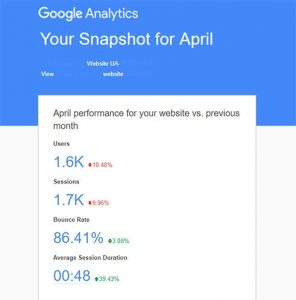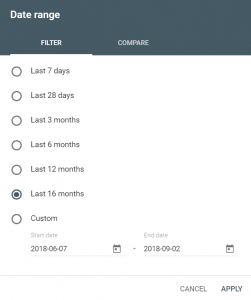Audit your analytics on a regular basis to ensure the data you are collecting is as accurate as possible and that all data that should be collected is reported.
All great marketing departments and teams should have a marketing plan and know it intimately. What is surprising is how often when conducting an analytics audit when the first thing I ask for is a copy of their marketing plan, how often I’m presented with a “deer in headlights” look or at best given the response “Oh we have one, but haven’t updated it in years. We just know it!”
Why is having a current marketing plan that is disseminated and known by your entire marketing team and other teams within your organization critical and how does this have anything to do with your corporate analytics? For the simple reason: Without one, how does the marketing team actually know what they should be doing. More importantly, how can success be measured?
The key to marketing success is to merge a marketing plan with a measurement plan into a unified plan.
Key measurement elements of a marketing plan
The first step in developing or validating a marketing plan is ensuring the marketing department’s mission statement aligns with the corporate mission statement. This is where many marketing teams make their first mistake. If the two don’t align properly, then how can the marketing department effectively obtain corporate buy-in and ensure their marketing efforts are effective in helping the organization meet its overall goals?
Once the marketing department has validated its mission statement, it needs to define specific objectives. Then, it is time to merge these elements with a measurement plan that defines specific marketing tactics that can be planned, budgeted for, approved, executed and measured.
Clearly define these tactics. Examples can be:
- More posts (paid and non-paid) on specific social apps (i.e. Facebook, Twitter, Reddit, etc.)
- More engagement with the public on social media sites
- Creation of branded ads
Perhaps the most difficult task in this process is that of defining the appropriate Key Performance Indicators to measure how these tactics measure up. Some KPI in support of the above examples might be:
- Increase in branded organic search traffic
- Overall increase in organic search traffic
- Increased activity/engagement on corporate social media accounts including click-throughs on posts
- Increase click-through rates on branded ads
- Increase in online sales by specific channels (organic search, branded campaigns, social accounts, etc.)
When defining your KPI keep in mind the following four factors that make up a useful KPI:
- Must utilize obtainable data
- Must relate directly to the marketing objective
- Should not be an absolute value but a ratio or comparison. For example, a KPI for improved customer engagement might be to increase average session duration. Or, measure average time on site comparing period one to period two. Or, a KPI for measuring effective campaigns on the “average number of orders per 100 sessions” by campaign
- Must be easily reportable and understandable by the target audience.
With the KPIs in place, ensure your analytics account is configured correctly. Ensure that you can accurately – without too much effort – report on the identified KPIs. Have all the required channels been defined? Don’t just rely on default channels from your analytics tool. Make sure the marketing activities to support the marketing department’s mission statement are realistic and approved.
Marketing measurement plans are typically in a layout grid format. Do a quick search and you’ll discover many suggested layouts. My favorite is simple:

With a merged marketing measurement plan in place, the next task is to align your corporate analytics to capture appropriate data and making it reportable becomes an easier task, as well as getting buy-in from other departments.
Imagine if your marketing plan didn’t include a KPI on sales by channel? Could you get your IT group to make the necessary coding changes to push transaction values to your analytics tool? Frequently they simply default to saying: “Sales information is available from our e-commerce tool.” While true, you can extract sales data from a backend tool, in virtually all cases, you can’t attribute those sales to specific marketing efforts. It is only with an approved marketing plan in place can you apply leverage and get this data integrated with your analytics.
What about custom channels? Do you need to segregate paid social, from non-paid social (your team’s participating on social sites on your own posts), from public sharing of your content? Yes, these are three unique social channels that should be tracked and reported on, if your company is utilizing these channels as part of their marketing plan.
You can create custom analytic reports that demonstrate how effective various marketing efforts are in support of not only the marketing department’s mission statement but also the corporate mission statement. This allows you to easily evaluate and adjust with objectively to demonstrate just how successful these efforts are to the c-suite.
Remember that marketing mission statements are a living and breathing thing. The world of online marketing is constantly changing as are the tools that help execute marketing plans and those that measure results. Plan on reviewing the mission statement at a minimum annually and possibly quarterly or semi-annually if appropriate for the organization. Don’t forget to get analytics audited by an independent auditor on a regular basis to ensure the data being collected is as accurate as possible, and that all data that should be collected is reported.
Opinions expressed in this article are those of the guest author and not necessarily Marketing Land. Staff authors are listed here.
Marketing Land – Internet Marketing News, Strategies & Tips
(15)









